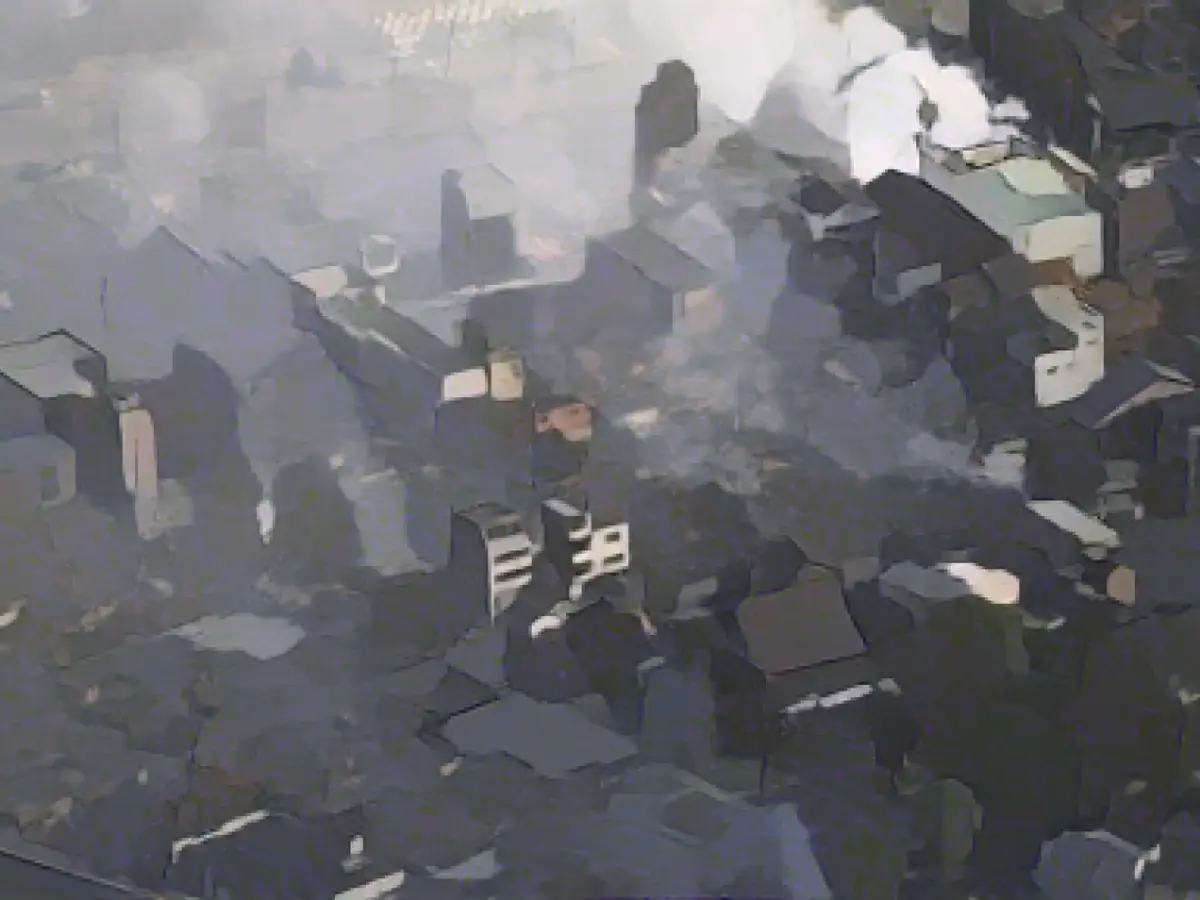Disasters - Earthquake in Japan: death toll continues to rise
The death toll from a series of strong earthquakes on the west coast of Japan has risen further. The Japanese television station NHK reported that at least 30 people had died in the hard-hit Ishikawa prefecture. The meteorological authority lifted a tsunami warning issued for the entire west coast of Japan.
The tremors caused considerable damage. Around 100,000 people were urged to seek safety during the New Year celebrations.
The first particularly strong earthquake reached a magnitude of 7.6 shortly before nightfall on Monday afternoon. The epicenter was in the Noto peninsula area of Ishikawa. At dawn, the emergency services tried to assess the full extent of the destruction and search for survivors. "The search and rescue of people affected by the quake is a battle against time," said Prime Minister Fumio Kishida at a meeting of the crisis management team on Tuesday. More than 46,000 people in the prefectures and Toyama were still evacuated on Tuesday.
Damage complicates the work of the emergency services
Thousands of army personnel, firefighters and police officers from all over the country were dispatched to the worst-hit area on the relatively remote Noto peninsula. However, rescue work was hampered by badly damaged and blocked roads. One of the airports in the region had to be closed due to cracks in the runway. Numerous houses collapsed or fell victim to fires, roads were torn up and tens of thousands of households lost power.
Several people suffered injuries. In the hard-hit town of Wajima in Ishikawa, more than 200 homes and stores caught fire the day before, according to local media reports. Low flames were still blazing in places on Tuesday morning and firefighters were still in action. Thick smoke hung over the area. Around 1,000 people were accommodated at an airbase in Wajima and provided with blankets, water and food, the government announced. Footage from the NHK television station showed a seven-storey building in Wajima lying on its side.
Quakes continue
While the emergency services assessed the full extent of the destruction and began initial clean-up operations, the series of quakes continued. The weather authorities had issued a strong warning for Ishikawa the previous day for a possible five-metre tsunami, which was later lifted. Lower tsunami warnings were initially still in place for all other coastal regions in the west. Several tidal waves of around one meter in height hit the coast. At daybreak on Tuesday, thick layers of brown mud lay on the roads in some places.
The tremors triggered landslides and trees fell onto roads. Several boats lay keel up in harbor basins. There were reports of burst water pipes. The government in Tokyo set up a crisis team and the armed forces were called in to provide disaster relief in Ishikawa. The meteorological authority warned of further strong quakes during the week, especially in the first two or three days after the particularly severe tremor on New Year's Day.
In March 2011, a magnitude 9 quake triggered a massive tsunami that devastated large areas in the north-east of the country and killed around 20,000 people. A meltdown occurred at the Fukushima Daiichi nuclear power plant. The Far Eastern island kingdom of Japan is one of the countries in the world most at risk from earthquakes.
Read also:
- Floods: water levels remain critical in many places
- Snow chaos further restricts Bavaria
- Continuous operation in the flood areas
- Flood situation remains tense in many places
- Prime Minister Fumio Kishida expressed concern about the situation in Toyama prefecture, adjacent to Ishikawa, as well, acknowledging the potential for further casualties and damage in the aftermath of the earthquakes along the Japanese west coast.
- Despite the continuous tremors and potential for additional tsunamis, the operational force, consisting of thousands of army personnel, firefighters, and police officers, remained committed to their rescue missions in the Noto peninsula, overcoming challenges such as blocked roads and damaged infrastructure.
- The catastrophic event in Japan's Ishikawa prefecture, marked by a strong earthquake and subsequent tsunami warnings, brought back painful memories of a similar disaster in 2011 in the northeastern part of the country, leading to significant loss of life and damage at the Fukushima Daiichi nuclear power plant.
- In the aftermath of the earthquakes and associated emergencies, local temples and community centers in the hard-hit towns like Wajima were transformed into temporary shelters for the displaced residents, providing them with essential supplies and support while they awaited further relief efforts.
- International aid organizations expressed sympathy and offered assistance to the Japanese government in managing the disaster response, recognizing Japan's unique challenges in coping with seismic activity and the subsequent consequences it brings to the region.
- Despite the prevalent challenges and losses across the affected areas, symbols of hope and resilience appeared, as volunteers and local organizations worked tirelessly to restore devastated neighborhoods, repair damaged roads, and provide reassurance to a nervous and devastated population.
Source: www.stern.de






